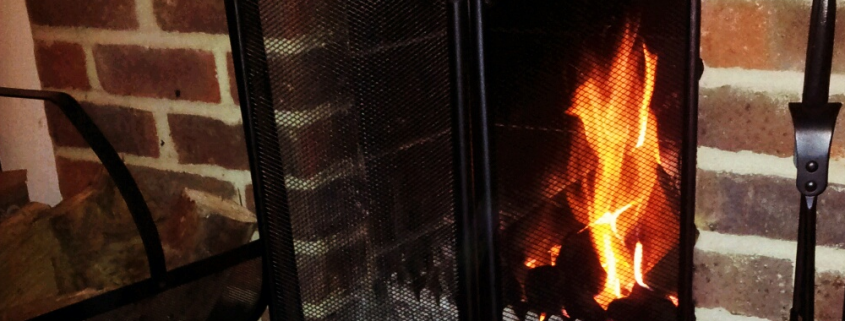Winter is fast approaching, and that means fireplace season. But don’t assume lighting a fire will warm up your house.
Unfortunately, you may end up cooler than when you started, since conventional fireplaces are notoriously inefficient sources of heat. In fact, most fireplaces take away more heat than they provide. The physics are simple: a fire needs oxygen to burn, which it draws from the surrounding air. In most cases, that means the fire is drawing in heated air from your house and sending it, along with some of its own radiant heat, up the chimney.
There are some things you can do to help improve the efficiency of your fireplace. If you have an older home, you probably have a freestanding masonry fireplace, meaning the fireplace rests on a foundation. If so, partially open a window in the room where the fireplace is located whenever you light a fire. That way, the fire will draw some fresh air from outside instead of taking air that is already heated from within the house. Modern freestanding masonry fireplaces are an improvement on older ones; the building code requires a fresh-air intake in the fireplace hearth, making it unnecessary to open a window.
To capture some of the escaping heat, a metal insert can be installed in some masonry fireplaces. These inserts improve efficiency by circulating air
from a metal cavity within the firebox back into the room.
There is another type of fireplace known as “zero clearance.” This pre-fabricated unit is so named because theoretically, the framed walls of the house can abut the unit itself, though in fact minimum clearance from combustibles is still required. They can be located almost anywhere, since they do not need their own foundation. These fireplaces vent through insulated metal chimneys running either within the house or outside an exterior wall and extending above the roofline.
Natural gas fireplaces are usually prefabricated. But instead of burning wood, they send flames around artificial logs to create a similar ambiance. Some models can be vented directly through an exterior wall instead of through a chimney. They are usually less expensive to install than their wood-burning counterparts, and some people prefer them for convenience: lighting a fire often means flipping a switch. Sometimes, these units can be installed into an existing masonry fireplace, though a chimney liner may be required.
In addition to providing fresh air for the fireplace, you can also reduce heat loss by installing tightly fitted glass doors that can be kept closed while the fire is burning. And remember the most obvious energy saver, all too often overlooked: close the
damper after the embers have died out, when the fireplace is not in use.
The bottom line, however, is that even with the best of modifications, operating an open-face fireplace is essentially a luxury.
Safety Note: The Ontario Fire Marshal Recommends having your fireplace chimney (metal or masonry) inspected yearly by a qualified heating contractor, even if it is only subject to occasional use.


